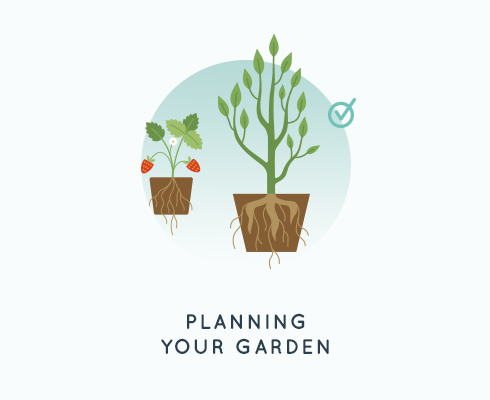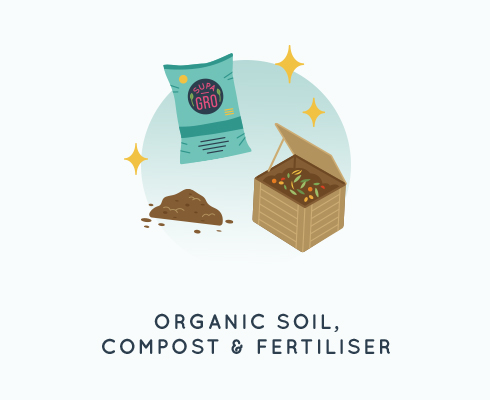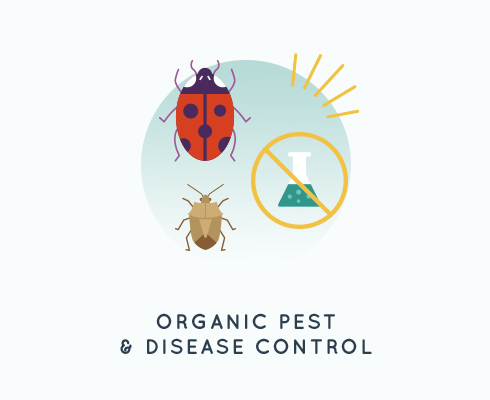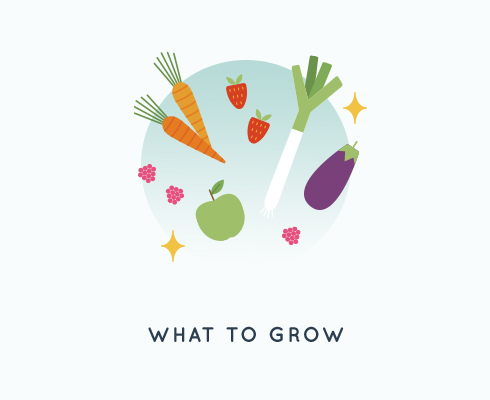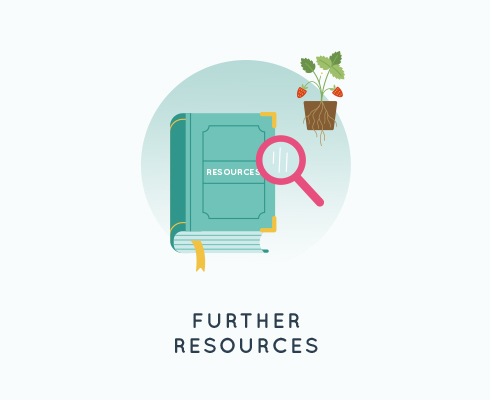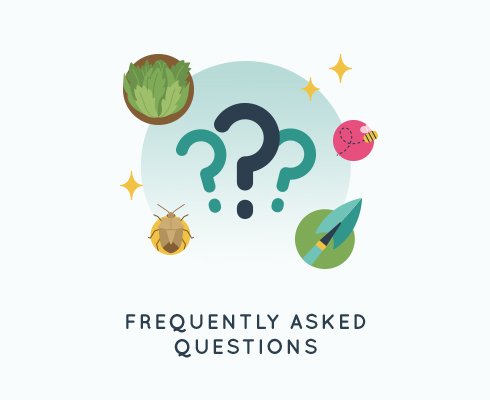Organic gardening is a really good option for home gardeners and is becoming increasingly popular. And while it isn’t the hardest thing in the world to learn, there are a lot of things you’ll need to know before you can successfully grow some of your own food organically.
This guide isn’t meant to teach you every single thing you need to know. There’s simply too much to learn to put into an online guide like this. At the same time, we hope to build you a good foundation from which to learn.
There are lots of articles online on organic gardening and many of them are good, but few go into enough detail to help you actually get started. This guide will give you the confidence to get started and create your own organic and sustainable vegetable garden.
You’ll have a good enough understanding such that if you want to become a true expert, you’ll know where you’re lacking.
So let’s get started.
Table of Contents
The Case for Organic Gardening
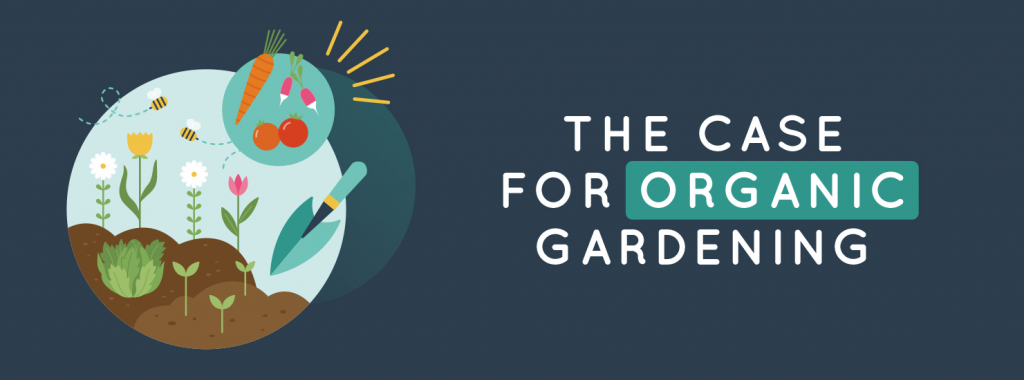
While many people think the arguments for organic gardening are straightforward, organic gardening is actually quite divisive. On one side we have hardcore environmentalists who believe that it’s the only way we should be growing plants, while on the other we have people who think that it’s overrated and only for gardeners who are slightly touched.
As with many things, the truth is a little more complicated.
Modern agriculture is great in that it has allowed us to greatly increase crop yields and feed the billions of extra people who now live on our planet. The question is at what cost has this come and do we need to apply the same techniques of large agriculture in our own gardens?

Advances in agriculture have taken many forms, but one of the main ways yields have increased have been through the use of chemicals. This isn’t inherently bad, but there are some definite downsides.
As more crops have been planted, there are fewer cows around to fertilise the soil. Soil requires nutrients to grow food and so chemicals have been used in their stead. In large enough quantities this can run off when it rains and pollute local waterways.
Also, as fields disappear and are replaced with crops, animal habitats are destroyed, taking the animals with them for good. For some this might not be a huge issue, but more and more people are becoming conscious of taking care of more than just ourselves.
In addition, the process of rotating and mixing crops has been largely abandoned, so pests and diseases that find a niche in a certain crop grow to exploit it, leading to larger problems that can only be solved by using stronger and stronger poisons as resistance increases.
Again, this is something that sounds harmless when you first think about it, but the consequences can be dire. We tend to think that in developed countries, poisons and pesticides would only be used if proven safe.
Historically, this hasn’t been the case though. There are numerous examples of poisons that have been used extensively until it was realised (too late) that they were harming humans.
DDT, Dieldrin, Ioxynil and 245T (One of the components of Agent Orange) have all been used extensively in large parts of the world.
While we’ve demonstrated that there are reasons for taking this approach with commercial farms, the arguments don’t really hold up when it comes to creating a vegetable garden in your own home.
The same thing happens when you look at pest control and fertilisers. While commercial growers are often forced by economics to use chemical pesticides and fertilisers, as a home grower you can get away with using organic versions.
With that said, we’re not a bunch of luddites that are going to recommend you garden the way your ancient ancestors did; this guide will be about melding traditional gardening techniques with advances in modern technology.
What are the benefits of going the extra mile and gardening organically?
For starters you’ll be growing safer and healthier food. You’ll also be growing the best quality fruits and vegetables; commercial agriculture is great for producing large volumes of food but the flavour does suffer.
Organic and sustainable gardening also gives you the chance to do your own little bit for the environment. With climate change and damage to the environment at the forefront of many minds these days, this certainly isn’t a benefit to sneeze at.
And it’s not just you that will benefit from these organically grown plants; by growing an organic vegetable garden you’ll end up creating a sustainable system for animals as well. By planting a variety of things in your garden you’ll create an ecosystem for lots of different creatures such as bees.
So now that you’re sold on building your own organic garden it’s time to think about how to go about doing so, so let’s have a look at planning our gardens.
Planning your Garden
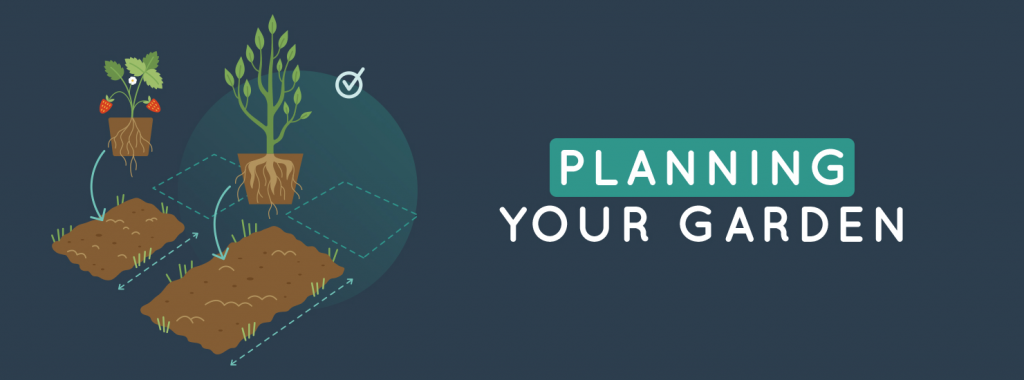
Just as you should sharpen your axe before you chop down a tree, so you should sit down and do some planning before you start your organic garden. While it might be exciting to jump in and start planting things, a little bit of planning goes a long way when you consider that your garden is going to be something that will be around for a long time.
A successful organic garden depends, in part, on growing a wide range of plants. This helps to attract a variety of wildlife and useful pest predators. A garden like this will generally require function over form (this isn’t about creating a beautiful garden) but that doesn’t mean you don’t put any thought into it. A successful garden needs to be well planned out if it’s going to achieve its objectives.
Start by understanding the physical characteristics of your garden. To get the most out of your garden you need to understand what sort of soil you have to work with, the direction it faces, as well as what features your garden has; such as pathways, bins, compost heaps and so on.
Once you have the pieces of the puzzle figured out, start drawing out how you think it could look. It might take a few goes to arrange everything properly, but that’s half the fun so don’t let that stop you.
Aspect & Climate
Another couple of important considerations are what’s known as your garden’s aspect and the climate that your garden exists in. Both of these will, in part, determine what you can plant and how you need to manage things as time goes on.
While you can’t really do that much to control either of these factors, they are important to understand.
Both of them will determine how much sun your garden beds get. Unless you have a large property unhindered by things like fences and buildings you need to think about how your aspect is going to influence the design.
North facing gardens can be cold and sunless, while south facing gardens can often get sun all day. To further illustrate this point we’ve added a diagram below to help you understand it better.

One useful technique to help with understanding how much sun your garden gets at certain times of the day is to go into your garden at different times of the day and take some photos so you can see which parts get more or less sun.
Other Design Considerations
In addition to understanding climate and sun, you’ll also need to understand what sort of soil you’re dealing with. This will be explained in greater detail so there’s no need to worry about it just yet.
Once you’ve got a good idea of what you want to include in your garden it’s time to start drawing. Start by adding the physical characteristics of your garden; your shed, clothesline, footpaths and so on. These are the essentials.
Next come the wants, the “Wouldn’t it be nice if…” elements. The issue that most of us will run into here is that our wants outstrip our space. When starting to design your garden it can be easy to get over excited and include more things than you could ever practically accommodate.
The way to solve this problem is to write down all the things you want and then start to prioritise them. Think about the sorts of food you want to eat. Think about the vegetables that are hard to find or expensive at your local organic market. What works well in your climate?
Garden Visit’s History Style Guide has some really cool layouts of garden designs throughout the ages and might be helpful in deciding on the type of garden you want to design.
Now that the design factors are mostly taken care of it’s time to dive into the soil and understand this next important factor in your gardening.
Organic Soil, Compost & Fertiliser
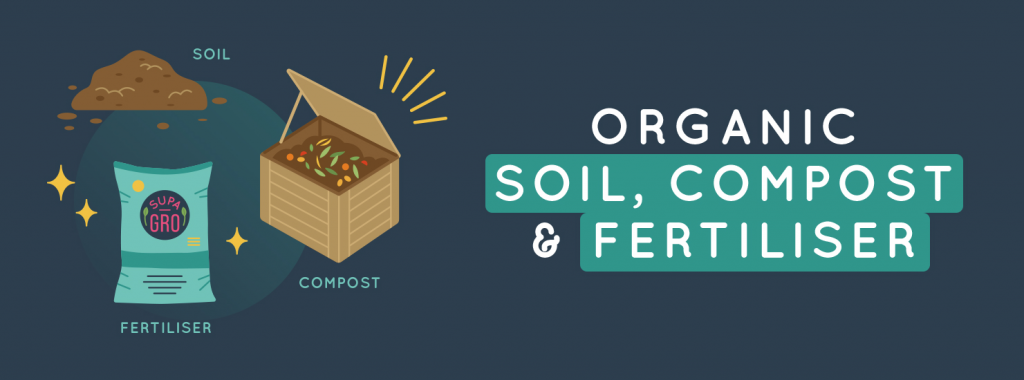
Of all the things to understand in the world of gardening, soil might be the most important. Knowing how soil quality can contribute to the success of your garden is something that can turn an average garden into a spectacular one.
Too many people think of soil as just a place for your plants to live. Some kind of inert home that allows the plants to grow rather than flop over once they hit a certain size. But those people are wrong; soil provides the fuel for the growth of your plants. Just as you don’t operate well on poor quality food, neither do your plants.
When soil is as it should be, it becomes the home for all sorts of organisms. You’ll find various types of algae, fungi, bacteria, worms and other little critters that provide the right conditions for optimal plant growth.
Soil can differ in several ways and it’s important to know what you’re working with so you can make the right adjustments as needed. In this section we’re going to look at all the types of soils, how to figure out what you’re working with and then what to do about it.
Let’s jump in.
Soil Profile
When you think of soil, chances are that what you’re thinking of is actually just the topsoil. This is an important piece of the soil puzzle, but there’s more to soil than just that. There are actually several layers to the full picture.
Here’s a diagram to help you understand:

Let’s take a look at these in more detail, starting with the top.
Topsoil is formed over a long period of time by the addition of organic matter such as plants and animals. It’s also where the roots of your plants will be, so when you’re working to improve the soil this is the level that you’re improving.
Below the topsoil lies the subsoil. This soil is much lower in nutrients than the topsoil so it’s not the best place for your roots to grow. If you’re digging in your garden, be careful not to bring up too much of this soil. You’ll be able to tell which is which because when you go deep enough, the soil will begin to change in appearance.
Mixed with enough organic matter, subsoil can turn into topsoil, so if you do dig a bit deep, don’t stress and just add some organic matter. Because of the lack of organic matter in the subsoil, this level of soil will tend to be a lighter colour than the topsoil.
Below the subsoil is the parent matter. This is from where the rest of the soil sprung from. For most people this is generally too deep to worry about, but it’s nice to know that it’s down there beneath the levels of soils you’ll be dealing with.
Soil Types
Now we’ve covered the soil profile, you’ll need to know about the different types of soils. This matters because the type of soil you have access to can change how you garden. It’s important to remember that your soil will be some kind of mix of the below; a pure type of soil is almost never found in nature.

Heaviness is another dimension by which soil differs. Soil that is on the heavy side of things can be hard to work with because it’s either too dry or too hard.
At the other end of the spectrum, soil that is too light doesn’t retain water so it’s hard for the vital water and nutrients to get into the plants.
The pH is another factor that you need to know and understand. This largely depends on the lime content in your soil and, to some extent, governs the types of plants you can grow because it makes some nutrients unavailable to certain plants.
This is something that can be changed to suit your plant preferences, so don’t stress out if there’s a slight mismatch between some of the plants you want to grow and your soil.
What does the perfect soil look like? While there’s no one perfect type of soil for all plants, the perfect soil would have a few components that are universally loved by plants.
It would have a good crumbly structure; not too heavy, not too light.
It would be rich in organic matter.
It would drain well; not so well that water disappears quickly, but not so poorly that the soil becomes waterlogged.
Now we’ll look at the main types of soils and the advantages and disadvantages of each.
Clay soil is actually quite good, although many people think it’s a difficult soil to work with. Because it’s thick and heavy, it does not drain well and therefore needs to be dug up every so often.
It also requires that organic matter be worked into it every year or so. This way it becomes easier to work with and provides better nutrients to your plants.
Silt is great soil to work with but comes with one main problem; drainage. When wet, silty soils tend to pack tightly together which greatly reduces drainage. Like clay soil, silt also needs organic matter added to it yearly to break it up and stop it from being poor when wet. Some people like to add a bucket of sand to every square metre to help with this.
Sandy soil drains easily, but the downside is that it’s also hungry and demanding. If your soil is quite sandy then you’ll need to add fertiliser because otherwise the nutrients and water will drain away without being taken up by the plants.
Like some of the other soil, adding in organic matter can help here.
Chalky soil tends to be thin and hungry. Because of the thinness, water drains quite well and so you don’t need to use fertilisers. One consideration is that chalk tends to be alkaline, so will be unsuitable for some kinds of plants.
Because of its ability to drain you don’t have to worry about it becoming too wet. To get the most out of this sort of soil, add acidic materials like peat, grass cuttings or compost.
Peaty soils are one of the better soils to have since they’re so fertile and easy to deal with. They can be a little on the acidic side, but you can add lime to counteract this. Another potential downside is that they can be low in nutrients, which can be dealt with by adding fertiliser.
Soil Improvement
Chances are that you don’t have perfect soil. So it’s a good idea to get a handle on soil improvement. Once you understand the limitations of your own soil you can make a few changes to improve the overall quality.
So let’s look at how to do this.
The first step is to analyse your soil. If you’re a casual gardener then you can skip this step, but if you’re serious about getting the most out of your garden then this is an important step. Regardless of how good your soil is it’s probably lacking in something.
You don’t need to overdo this step, but a couple of basic points is good to know. You can simply put some of your soil in a container and have it sent away for testing.
Soil Doctors are located in Western Australia but accept samples from across the country and they have a really good reputation.
If you’re from outside Australia there should be some local options available. If you’re more of a DIY type of person then you can pick up some basic kits at Bunnings.
Adding compost and manure to your soil is a good idea for just about everyone. Before Winter arrives each year, add about two buckets for every square metre of soil.
If you’re finding it hard to get your hands on compost and manure then you’ll want to use fertiliser instead. Blood and bone is a good organic fertiliser to use. Some plants require specific fertilisers to really flourish, but that’s beyond the scope of this guide.
Organic Compost
If you’re serious about building the best organic garden that you can, you’re going to need a compost heap. They’re great at returning organic matter back into the soil. They provide homes for organisms, can help with drainage and help the soil retain water.
Because some air circulation is important, you’re best to mix different sized stuff throughout the heap. For example, mixing finely cut grass cuttings with larger weeds.
Consider adding water if your compost heap is too dry. This generally won’t be a problem if you’re using lots of watery things like grass clippings, but it’s still something to keep in mind.
A proper bin can be good for your compost heap but it’s not necessary. One big advantage you get from having a bin is that it allows all of the compost inside to rot, whereas a pile of stuff somewhere in your garden will dry along the exposed edges.
Organic Fertilisers
In an ideal world you wouldn’t have to use fertilisers; you would be able to rely solely on compost and manure. But sometimes you need a bit of help and that is where fertiliser comes in.
Also, it’s possible that your soil is lacking in specific nutrients and correcting that with organic material can take some time. Depending on the severity of the deficiency, it can sometimes take years. In this case it’s easier to just add fertiliser.
If you’ve done some soil testing then you should know the pH of your soil. Most plants in organic vegetable gardens prefer a pH of about 6.5, so you might need to alter things a little bit.
How fertilisers work is beyond the scope of this guide, but we can take the time to look at the basics. Fertilisers consist of three main nutrients:
- Nitrogen
- Phosphorus
- Potassium
Chlorophyll requires nitrogen, flowers and fruit require potassium and roots require phosphorus.
Popular organic fertilisers:
- Blood and bone (a mainstay because it’s a balanced fertiliser)
- Hoof and horn (good for slow release nitrogen)
- Animal manure (good all rounder)
Planting your Vegetables
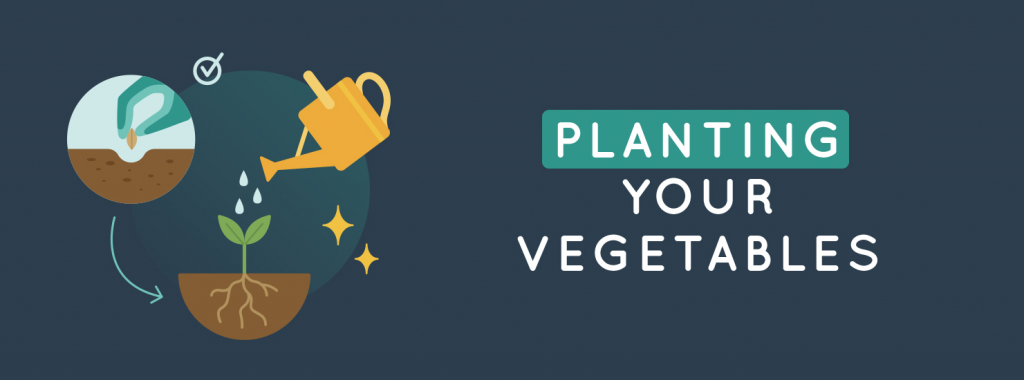
Now that everything is ready it’s time to learn about how to actually plant your vegetables. Starting with deep garden beds is usually a good idea as it can help with getting greater yields.
Mulching is another technique that you’ll need to get your head around. It involves covering the surface of the soil with organic matter to condition the soil.
Watering is something else you’ll need to do quite a bit of, depending on the climate you live in. While many people think that underwatering is the only way to get watering wrong, overwatering is just as big a problem.
When you’re watering your garden, make sure that you keep the amount of water constant throughout the bed.
Water when you notice the soil becoming dry, but not so late that the plants begin to suffer. As you gain experience you’ll get a feeling for when the right time is.
Watering your fruits and vegetables when they begin to swell can also increase their weight, so timing is everything.
When it comes to buying the right tools, you’re generally better off if you buy good quality tools so they last longer. If you’re on a budget you might want to buy one at a time rather than new ones all the time.
Here are a few pictures of tools you’ll want to acquire if you’re getting into gardening:
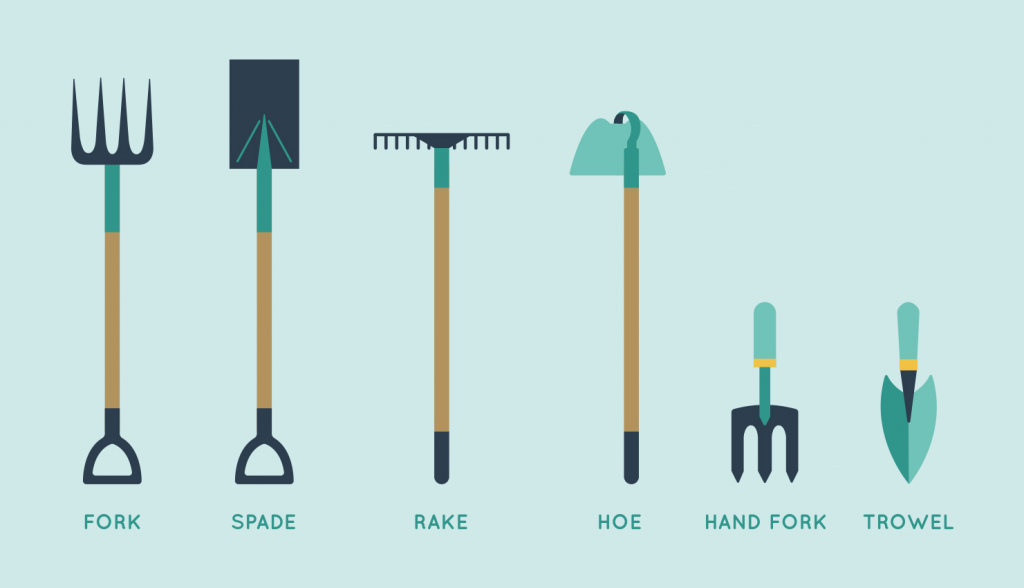
Organic Pest & Disease Control
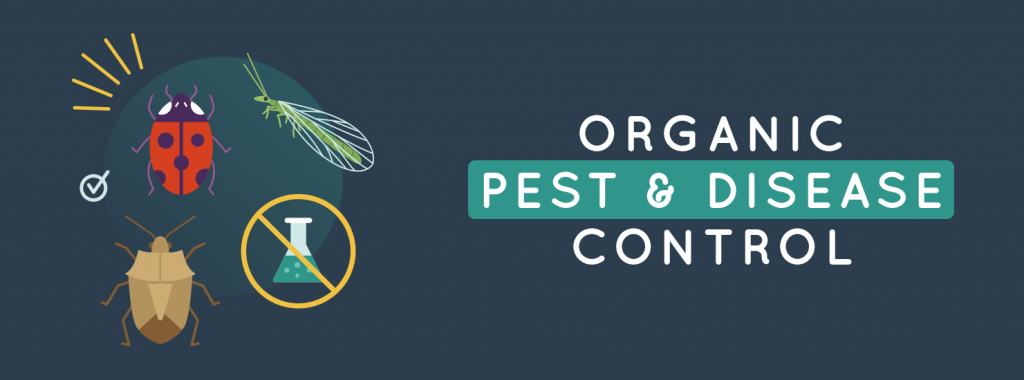
Pest and disease control is a necessary part of any gardeners routine. And while commercial growers have little choice but to use chemical pesticides, you can choose a different route.
Organic methods just aren’t practical when you’re a commercial farmer. There are just too many things to do and too wide an area to take care of things the way you can; so the only way for them is to spray with chemicals.
One advantage that you have is the ability to plant a wide diversity of plants. Doing this attracts a large variety of wildlife that prey on pests. So while you might get pests from time to time, they won’t get out of control like in commercial farms where one species can take over a crop if left alone.
When it comes to dealing with pests, prevention is often the best medicine. If you have good diversity in your garden and keep your plants healthy (and if you’re reading this guide then that should be a piece of cake) then you’ll run into few issues.
By feeding the soil rather than the plants, you’ll end up with strong plants that are better at fighting off pests. That said, from time to time you’ll need to use some organic pesticides to get rid of the more stubborn pests.
What to Grow
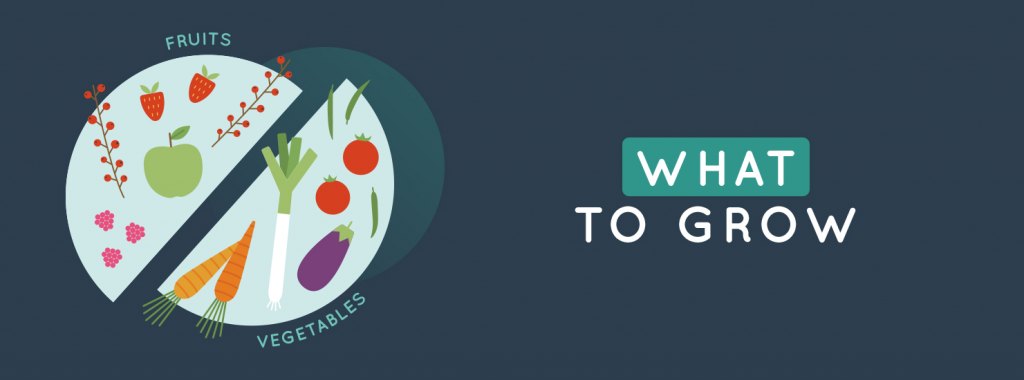
Chances are you’ll want to grow more things than you have space for, so choosing what to grow often comes down to priorities. In this section you’ll learn about some of the more popular fruits and vegetables to grow and a few tips on how to grow them.
Salad Vegetables
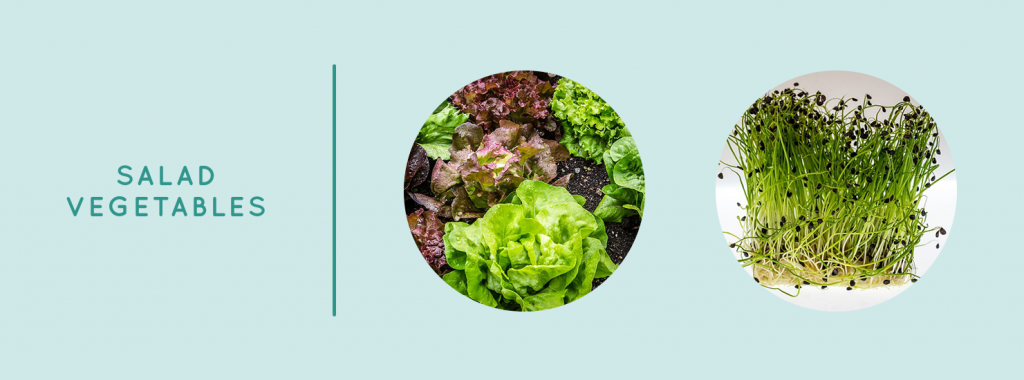
Watercress: Watercress is really nutritious and often used in salads. As a plant they like lots of moisture, so water retentive soil is important. They can flourish quite well in shady parts of your garden. Start them off by growing the seeds indoors, then once they’re ready to plant outside, set them about 10cm apart.
Weeds can be an issue for watercress, so you’ll need to keep an eye on them, however pests aren’t much trouble.
Lettuce: It’s hard to go past lettuce when choosing what to plant in your garden. In addition to being popular, it’s also quite easy to grow and available all year round. Choose whatever variety you like, of which there are many.
Water retentive soil is preferred and if the weather is hot then a little bit of shade won’t hurt. Plant them as seedlings when they reach 5cm in height, with about 15cm between each plant.
Shoot Vegetables
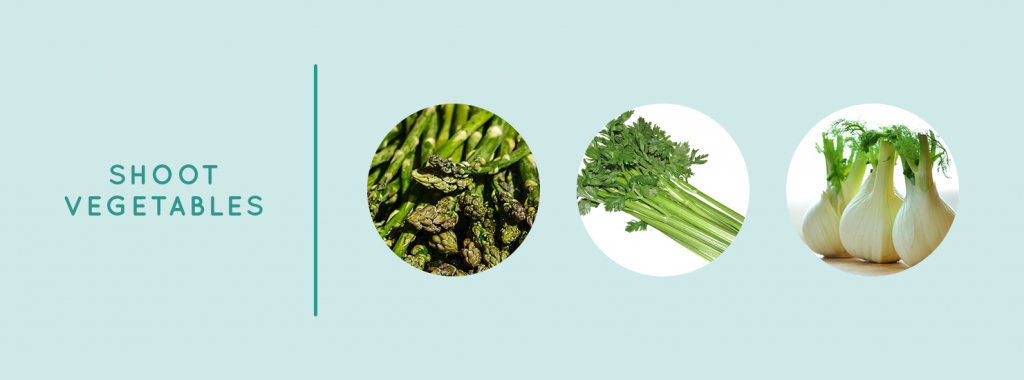
Asparagus: Asparagus can take up a surprisingly large amount of space and doesn’t produce full spears for three years, but if you like it then it’s well worth growing. They like soil with good drainage and plenty of sun.
They’re also thirsty plants, so make sure they never run out of water. Slugs and beetles also enjoy asparagus so make sure to keep an eye out.
Fennel: Fennel can be a tricky thing to grow, but if you like the aniseed flavour then it can be well worth it. They like lots of sunshine and rich soil.
Sow them about 30cm apart and make sure they don’t run out of water. After you see them start to grow out of the earth, harvest the plants. Some pests like slugs also enjoy fennel, so watch out.
Celery: Celery is actually one of the easier plants to grow. They like soil that retains moisture, so make sure you give them plenty of water. When planting, space them out about 30cm apart so they have enough room to grow.
In the Summer, feed them with fertiliser and watch out for slugs.
Pod Vegetables

Corn: Corn starts to lose its flavour once it’s picked, so the sooner you eat it the better. Corn tends to like lots of sun. Plant them during Spring about 20cm deep and 60cm apart.
When tassels at the top of the plant turn brown and then black you know it’s time for harvesting.
Peas: Fresh peas taste a lot better than frozen ones, although many people these days don’t even know. Peas are interesting in that they make their own nitrogen, so they don’t need much help in that department.
Plant them in Spring, pick them and then eat as soon as possible for the freshest taste. Birds, mice and moths all like peas, so you need to keep a watchful eye on them.
Green beans: Green beans grow best at pH 6.5, so add lime if necessary. They need a warm soil and are best planted in Spring, in rows 30cm apart. They often benefit from a little mulch. Watch out for slugs and aphids.
Fruit Vegetables
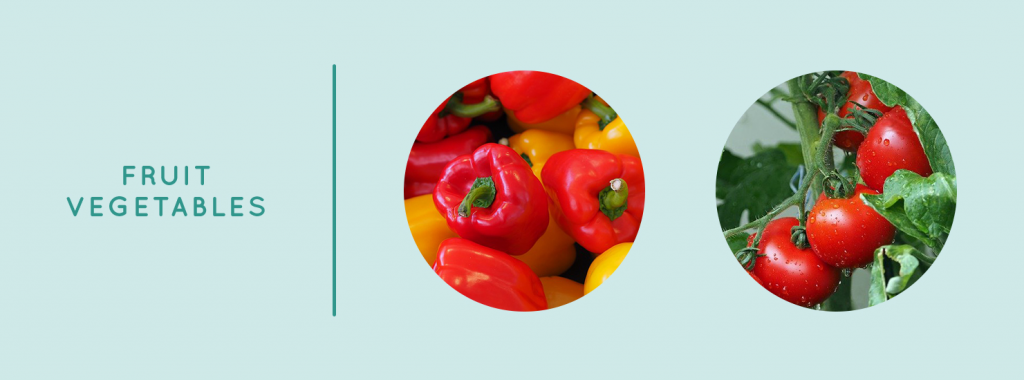
Tomatoes: Tomatoes need lots of sun and well manured soil that retains nutrients. Start them as seeds in your windowsill and then transfer them to pots when they develop leaves. Plant them in beds about 50cm apart.
In Summer, feed them with fertiliser until Autumn. Pick the fruit as soon as they are nice and ripe. Lots of insects like tomatoes so keep an eye on them.
Capsicums: Many people don’t know this, but red and green capsicum are actually the same varieties; it’s just that the red ones have been left to ripen longer. They need lots of sun and like soil with plenty of manure.
Water weekly and harvest when the fruits have grown large and are the colour you like. Keep an eye out for pests as well.
Bulb Vegetables
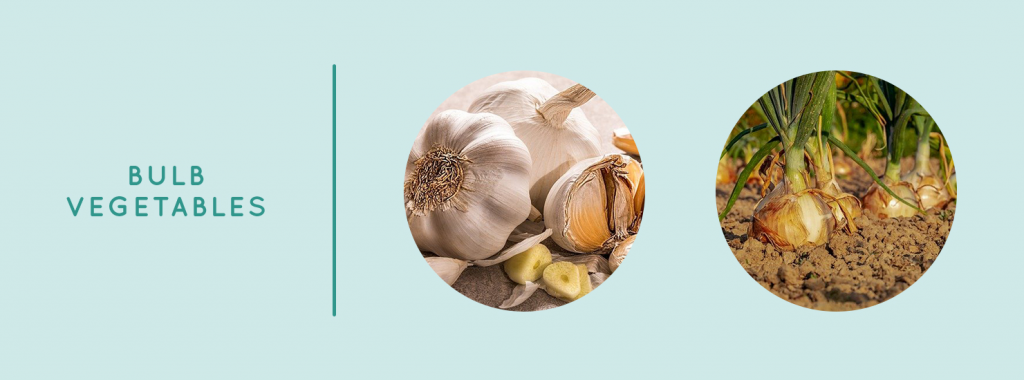
Garlic: Garlic is easy to grow if you have enough sun. They like soil with organic matter and when planting, make sure the pointy end goes up.
Plant 15cm apart and dig up in Summer. You shouldn’t have any worries from pests or diseases.
Onions: Like all bulbs, onions prefer sun and rich soil, so add manure to your beds. Onions can be planted close together at about 5cm apart. Water them in dry weather and when the foliage turns brown dig them out.
Squash Vegetables
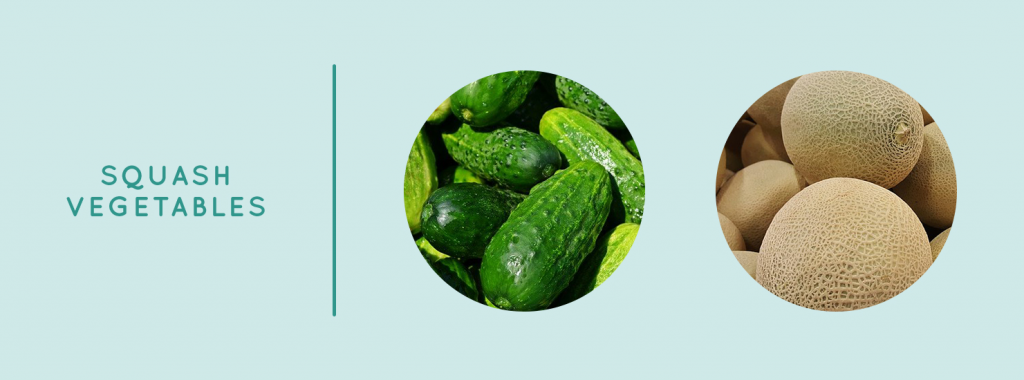
Cucumbers: Cucumbers really like rich, well manured soil. It’s best to plant them outside in late Spring with about 90cm between the plants. For the best taste, cut the cucumbers while they’re still young and watch out for insects.
Cantaloupe: Just like cucumbers, cantaloupe also like well manured soil and lots of water. Plant them about 90cm apart (also just like the cucumbers) and cut the fruit when the ends both feel a bit soft. You’ll need to keep a close eye on them as insects love to feed on cantaloupe too.
Root Vegetables
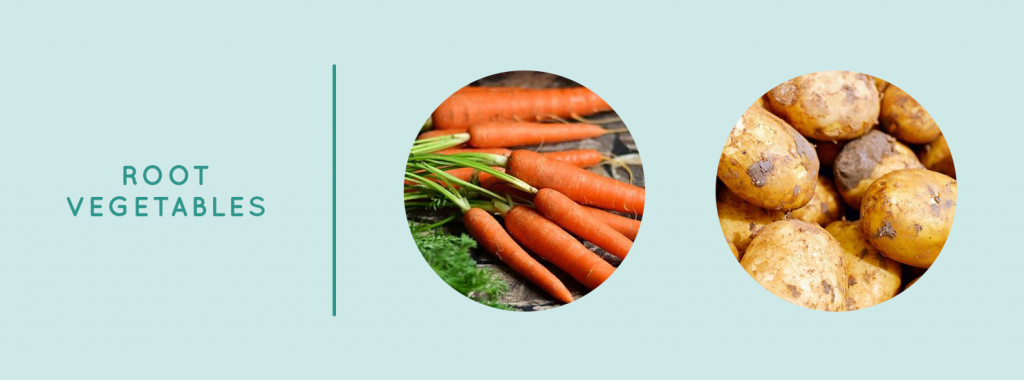
Carrots: Carrots are really easy to grow throughout the year, which is nice considering how popular they are. They tend to prefer lighter soils and grow best when planted 20cm apart. Make sure to keep them weed free and pull the carrots from the ground when they turn crisp.
Potatoes: Potatoes are popular with just about everyone, but they aren’t always the best choice for your home garden. They take up a lot of space and are often the easiest things to find at your local organic market.
They’re usually grown from potato eyes rather than seeds and they need water retentive soil with lots of organic matter. Plant them in late winter, 30cm apart and 15cm deep. Then dig them up when they start to flower.
Slugs, worms, blight and others can affect them so make sure to keep a close on them as they grow.
Leafy Vegetables
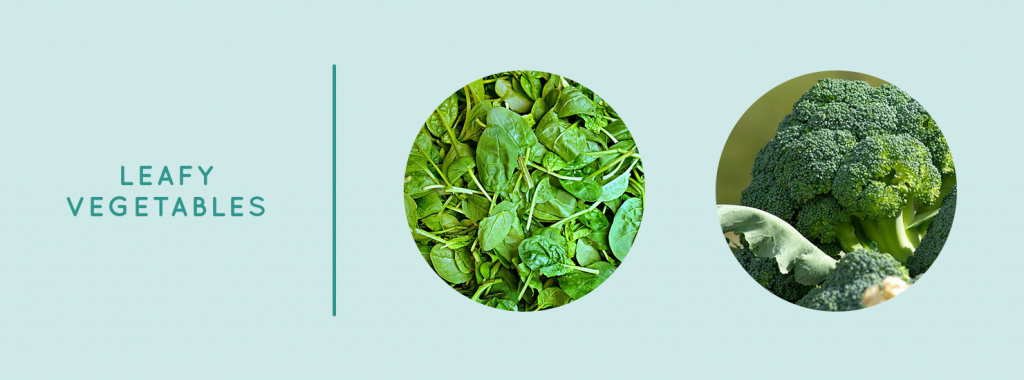
Spinach: Spinach is one of the more popular plants to grow and eat. They love water retentive soil and can be a little picky when it comes to pH, so often lime needs to be added. They’re also easy to maintain with just some occasional watering and weeding. Aphids and mildew are two things that you need to be on the lookout for, however.
Broccoli: Broccoli is one of the easiest plants to grow and like spinach, it likes a bit of lime. Sow broccoli in late spring and plant 60cm apart with 30cm between rows. Water and make sure to keep them all weed free.
Try to prevent flowering which reduces yields. Pests can be a bother as well, so they’re something to keep an eye on.
Further Resources

We’ve tried to help you as much as we can in this guide, but there’s only so much we can go into in an online guide. If you want to further your education (and there’s still much to learn), then check out these resources.
Best Books
Mini Farming: Self Sufficiency on 1/4 Acre
Rodale’s Basic Organic Gardening: A Beginner’s Guide to Starting a Healthy Garden
The Vegetable Gardener’s Bible, 2nd ed
Carrots Love Tomatoes: Secrets of Companion Planting for Successful Gardening
Gaia’s Garden: A Guide to Home-Scale Permaculture, 2nd Edition
The Backyard Homestead: Produce all the food you need on just a quarter acre!
All New Square Foot Gardening, 3rd Edition
Floret Farm’s Cut Flower Garden
The New Organic Grower, 3rd Edition
Best Websites
A Way To Garden by Margaret Roach
Joe Gardener by Joe Lamp’l
Eastern Shore Gardener by Barbara
Chelsea Green Publishing by Fern Marshall Bradley
Garden Therapy by Stephanie Rose
Lovely Greens by Tanya Anderson
Urban Organic Gardener by Mike Lieberman
Best Suppliers
United Kingdom
Australia
Green Harvest Organic Gardening Supplies
USA
New Zealand
Weathersfield Certified Organics
Canada
Clubs
California Organic Gardening Club
Greater Dallas Organic Garden Club
Torbay Organic Gardening Society
Arlington organic Gardening Club
Surrey Organic Gardening Group
YouTube Channel
The Gardening Channel with James Prigioni
OYR Frugal & Sustainable Organic Gardening
Frequently Asked Questions

What is meant by organic gardening?
Organic gardening is the growing of plants (particularly edible ones) aided only by the use of plant or animal products.
Why is organic gardening important?
There are lots of benefits to organic gardening, but the main reason it’s important is that it can help the environment and provide ecosystems for creatures of all sorts.
What are the negatives of organic gardening?
The downsides for commercial organic gardening are often upsides for home gardens. Organic gardening is more labour intensive and can be more expensive, but at the scale you do it at home, it’s not a huge deal and largely rewarding.
What are the benefits of organic food?
Organically grown food is often tastier, healthier and better for the environment, so there are lots of reasons to grow your own organic food.
What is the best natural insecticide?
The best organic insecticide is neem oil. It comes from leaves and you can buy it at just about any gardening store.


